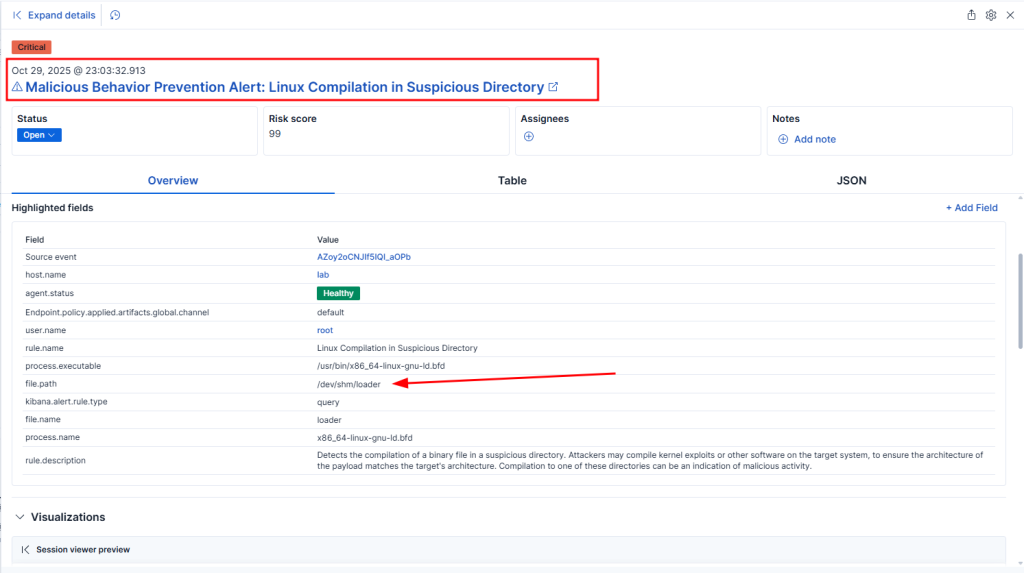Security researchers have unveiled a sophisticated Linux rootkit capable of bypassing Elastic Security’s advanced endpoint detection and response (EDR) mechanisms, demonstrating critical vulnerabilities in security monitoring solutions.
The Singularity rootkit employs multiple obfuscation and evasion techniques to defeat static signature analysis and behavioral monitoring systems designed to identify malicious kernel modules.
Elastic Security’s endpoint detection framework typically triggers more than 26 separate alerts when encountering standard rootkit implementations, yet this advanced threat successfully circumvents these defenses through methodical engineering.
String Obfuscation and Symbol Name Randomization
The rootkit leverages sophisticated evasion strategies that systematically disable detection capabilities.
The first technique involves compile-time string obfuscation, fragmenting sensitive strings like “GPL” and “kallsyms_lookup_name” into separate constants that the C compiler automatically concatenates during compilation.
This approach prevents YARA signature scanners from detecting contiguous malicious strings in the final binary while maintaining full functionality.
The second evasion method implements intelligent symbol name randomization. Standard rootkits utilize predictable naming patterns such as “hook_getdents” and “hide_module” that have become well-known signatures for detection systems.
Singularity replaces these indicators with kernel-like generic names, including prefixes such as “sys,” “kern,” and “dev,” making the malicious code appear indistinguishable from legitimate kernel operations and effectively blending into normal system activity.
Module Fragmentation and Behavioral Evasion
Module fragmentation represents the third evasion strategy, where researchers deploy encrypted chunks that only reassemble in memory during loading rather than deploying a monolithic kernel object.
The fragments undergo XOR encoding and are loaded through custom memory file descriptors created via memfd_create, ensuring the complete module never appears on disk for static analysis.
The fourth technique focuses on ftrace helper obfuscation, renaming framework functions that detection systems specifically monitor.
Functions like “fh_install_hook” are replaced with randomized identifiers while maintaining complete functionality.
Additionally, the rootkit bypasses traditional module loading mechanisms through direct syscalls via inline assembly, avoiding libc wrappers that endpoint detection systems actively monitor.
Researchers also successfully evaded reverse shell detection by writing malicious payloads to disk scripts first, then executing them with clean command lines containing no suspicious patterns.

This research demonstrates fundamental weaknesses in both static and behavioral detection methodologies for kernel-level threats.
The systematic evasion shows that signature-based approaches require continuous updates as threat actors develop new obfuscation strategies.
Security teams should prioritize kernel integrity monitoring and implement defense-in-depth strategies combining multiple detection approaches rather than relying exclusively on endpoint detection solutions.
Cyber Awareness Month Offer: Upskill With 100+ Premium Cybersecurity Courses From EHA's Diamond Membership: Join Today